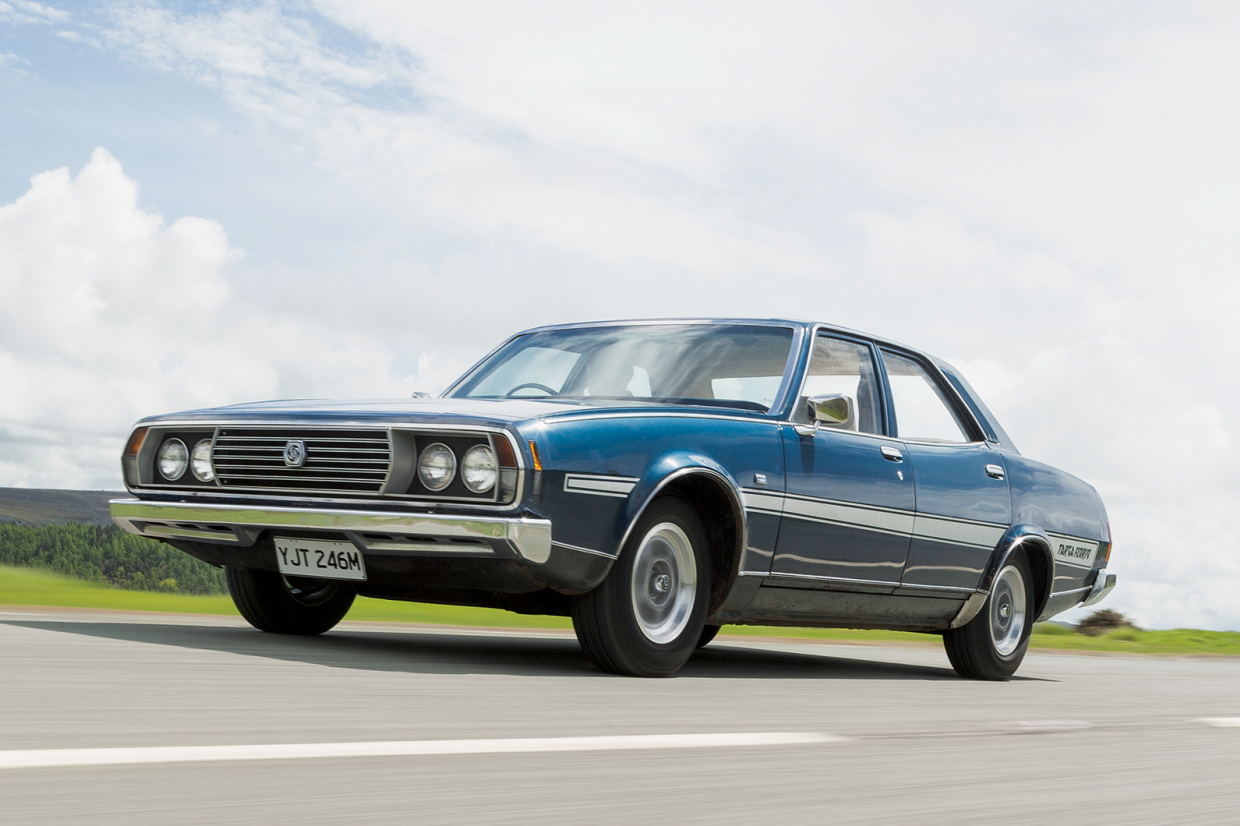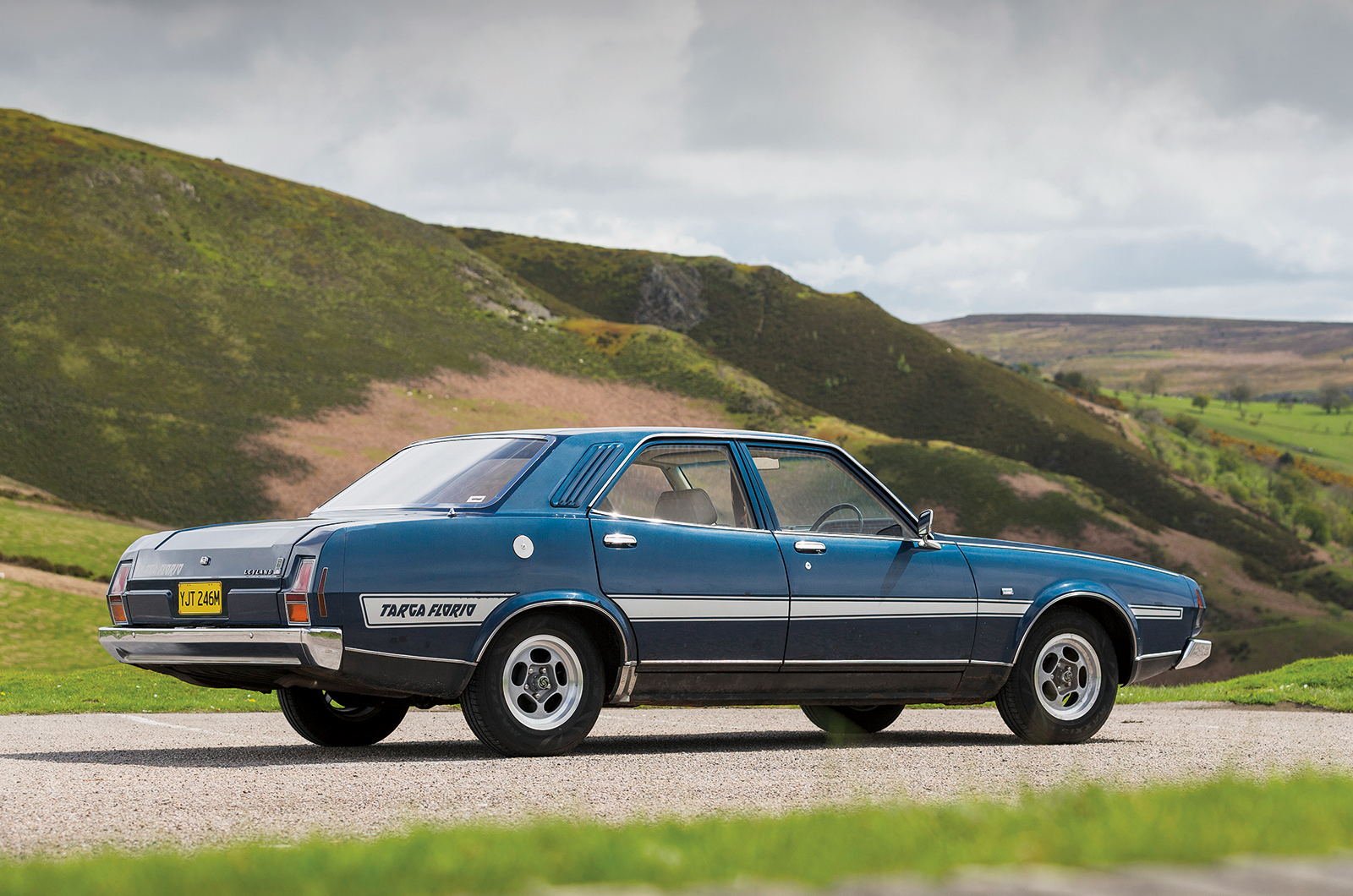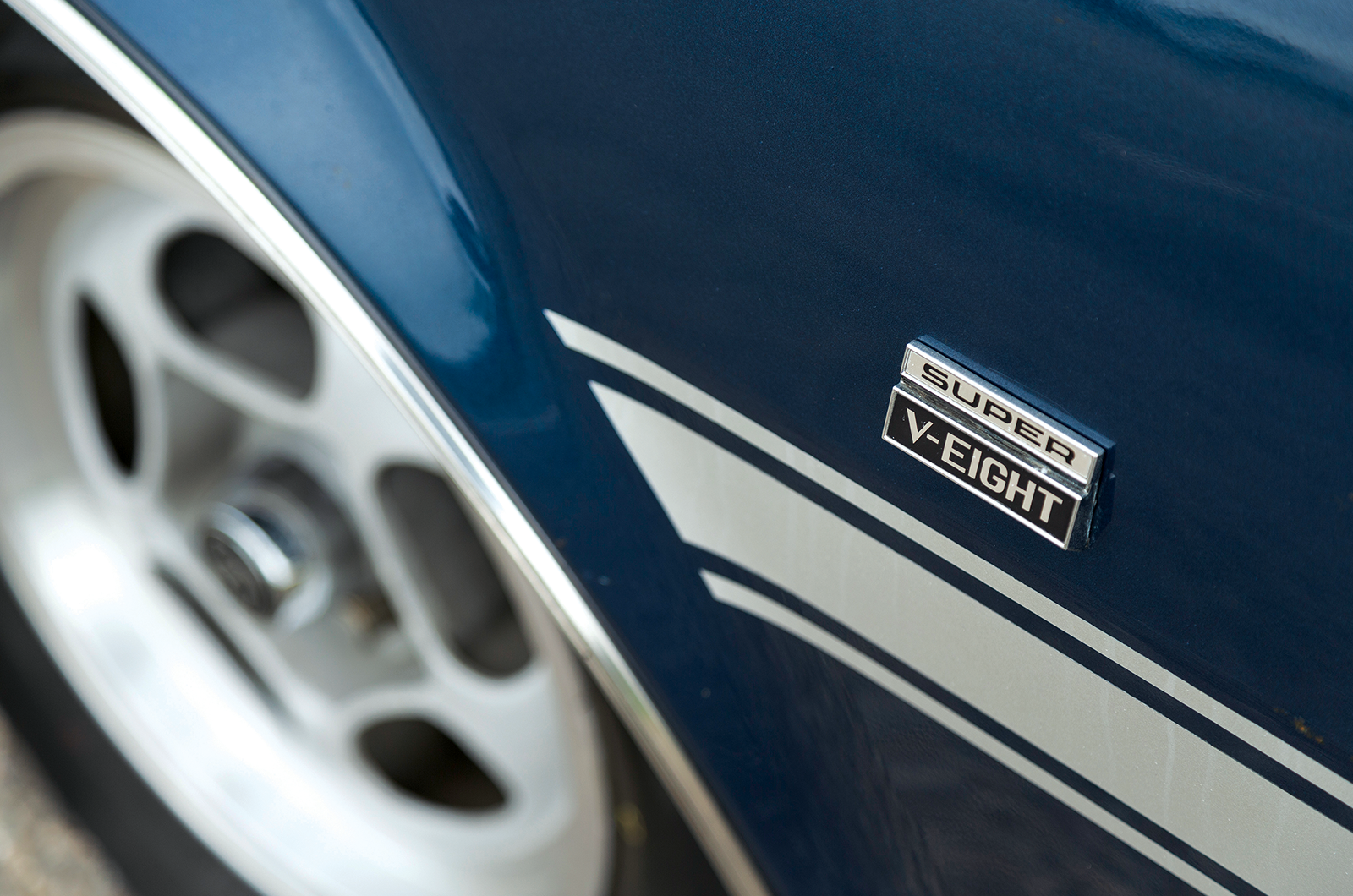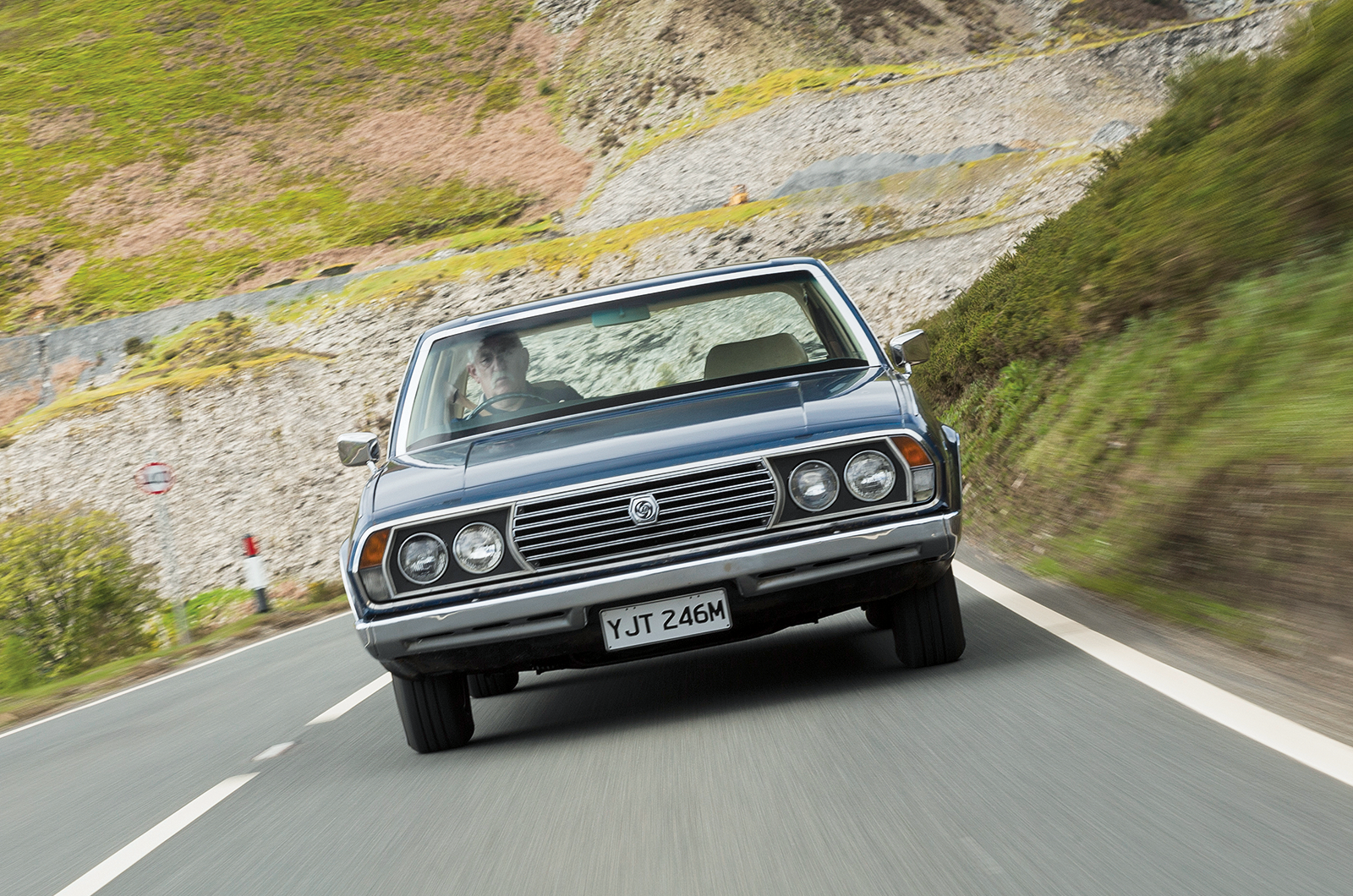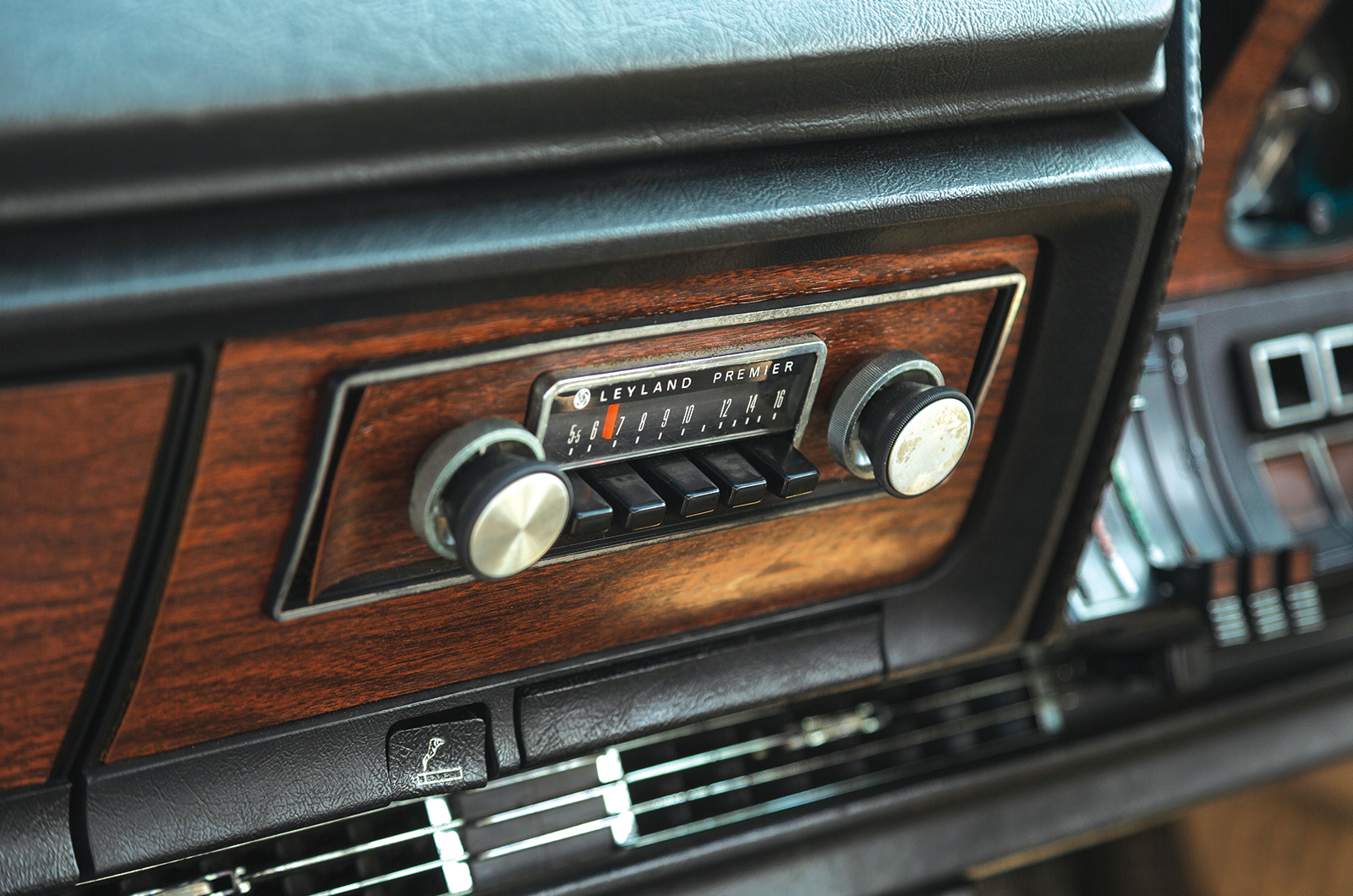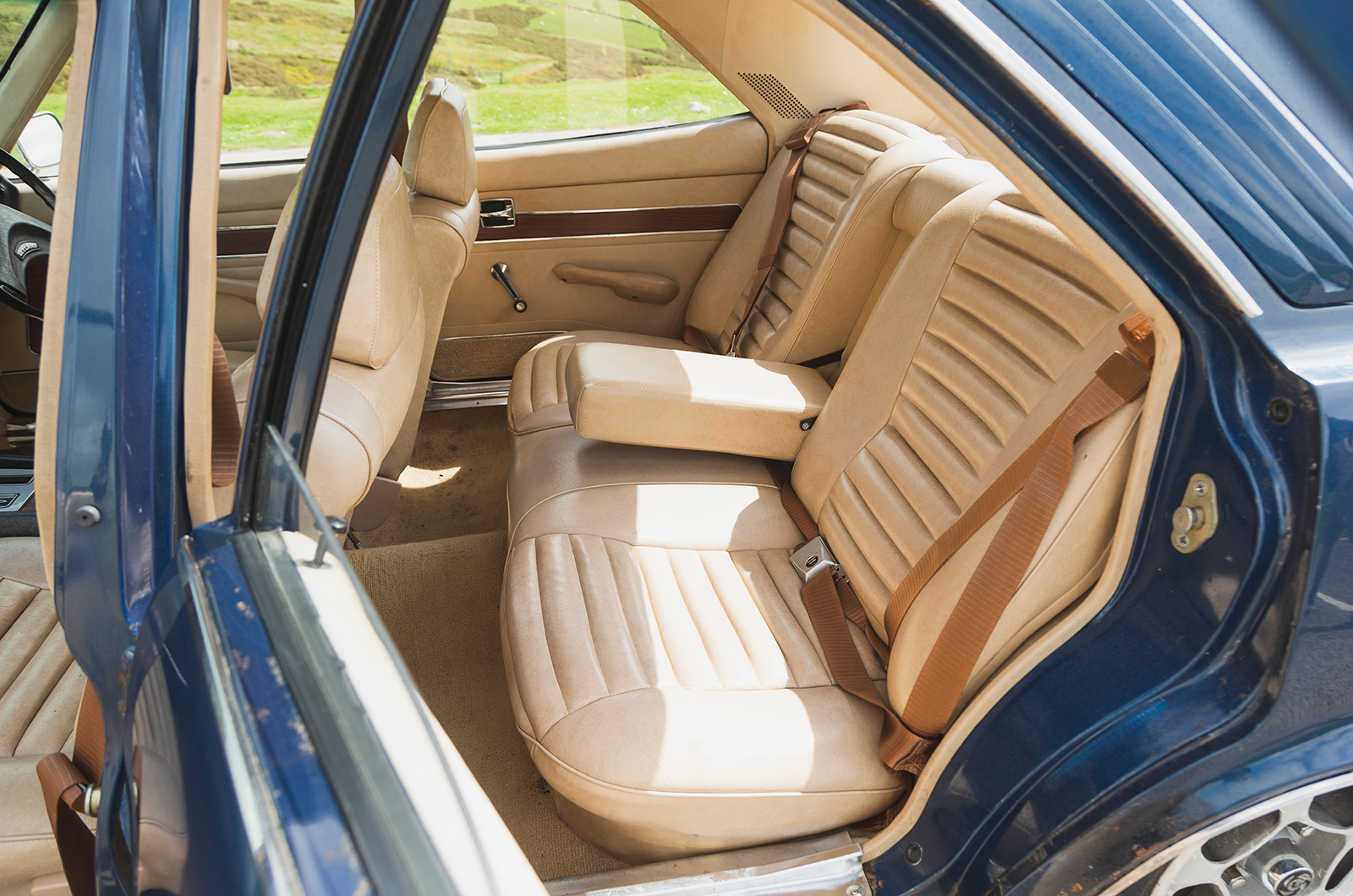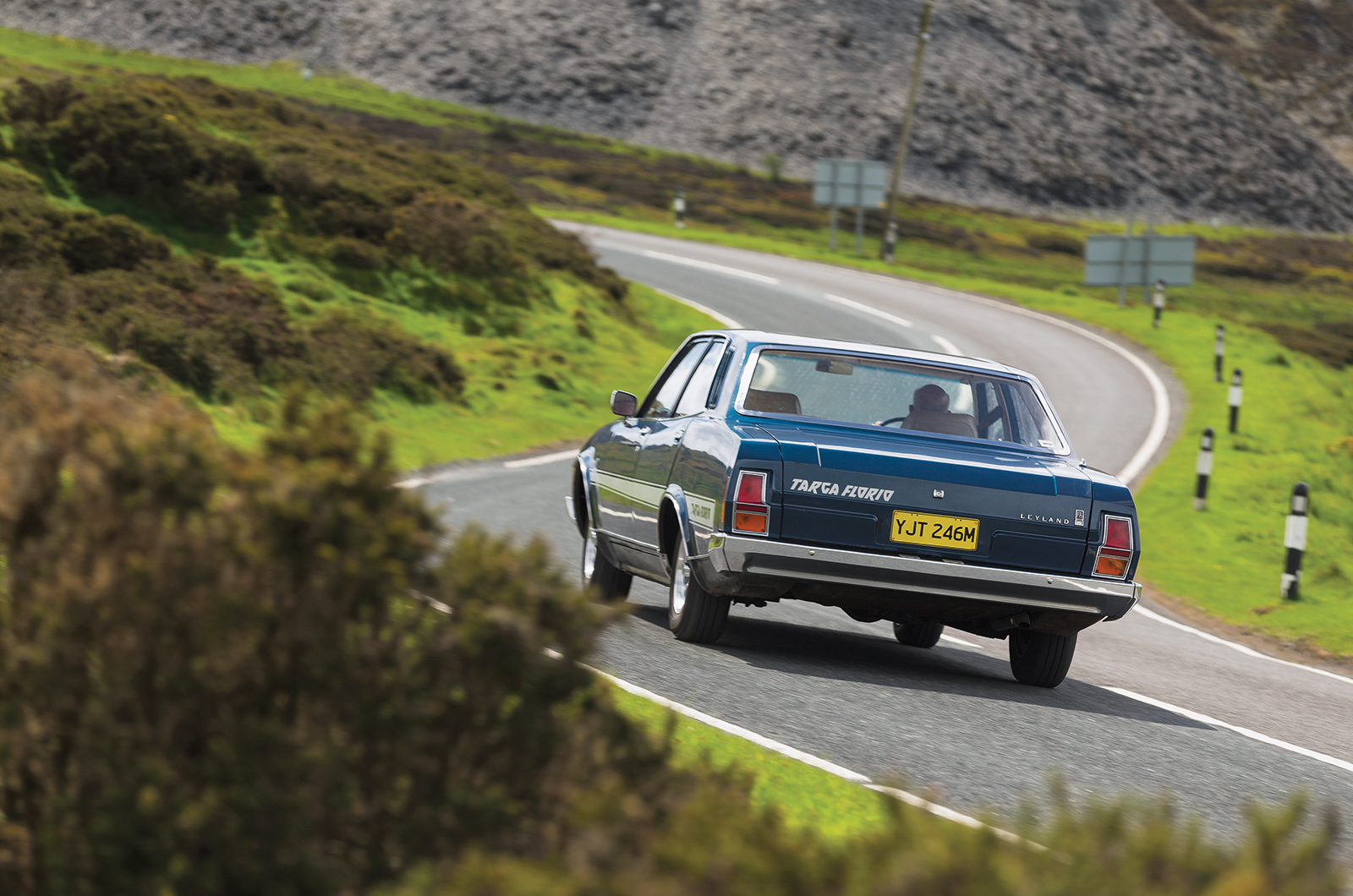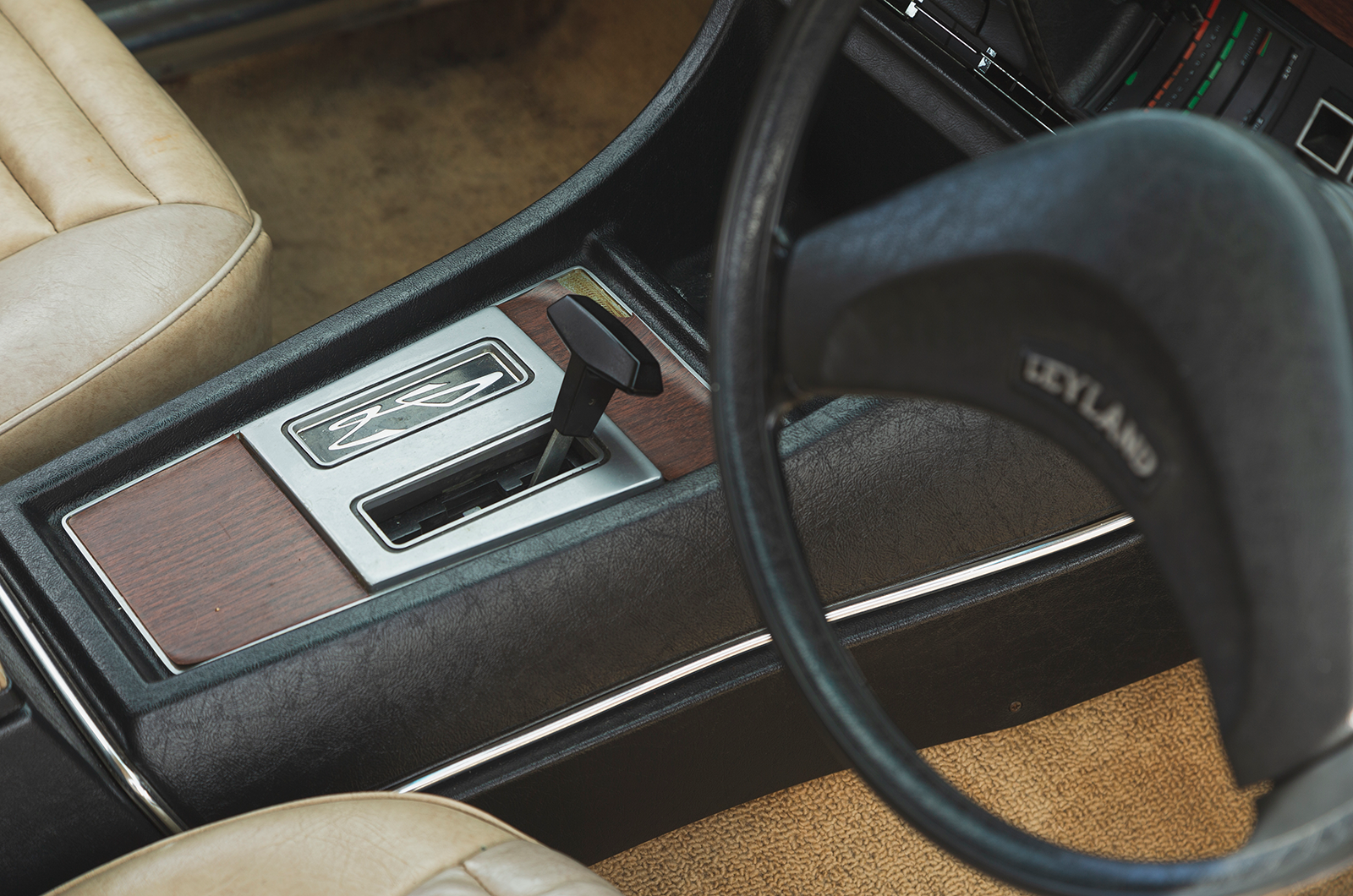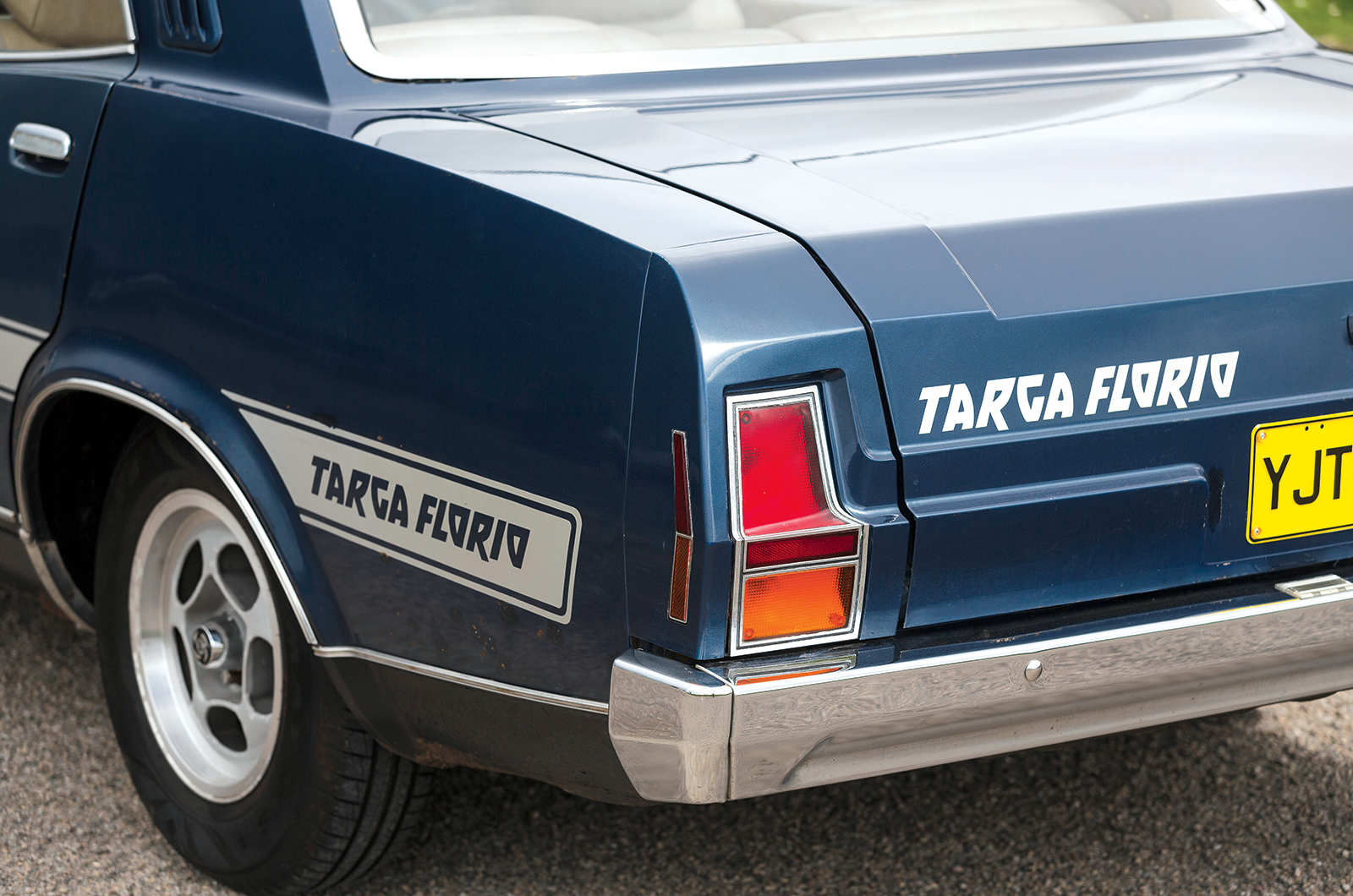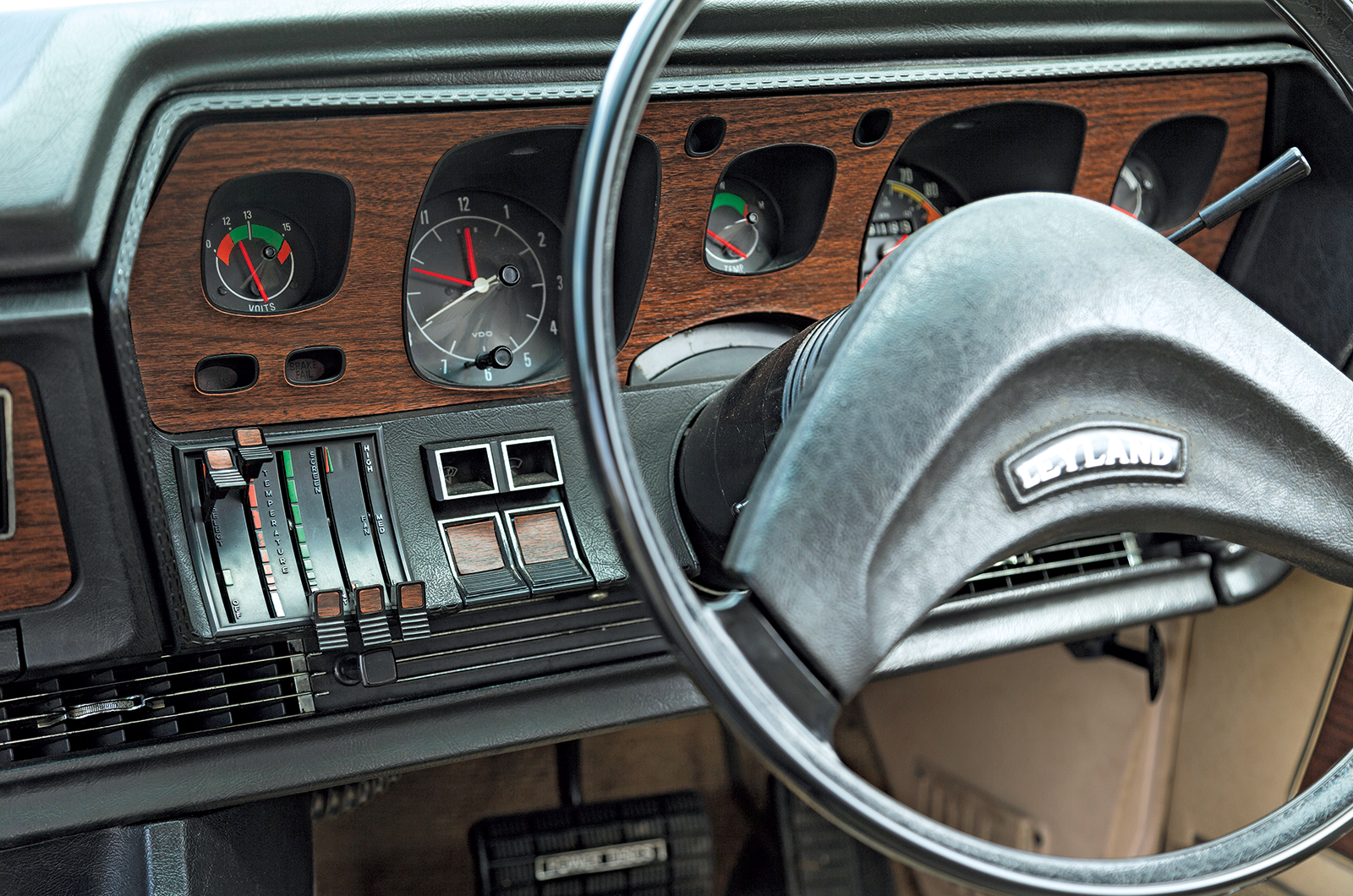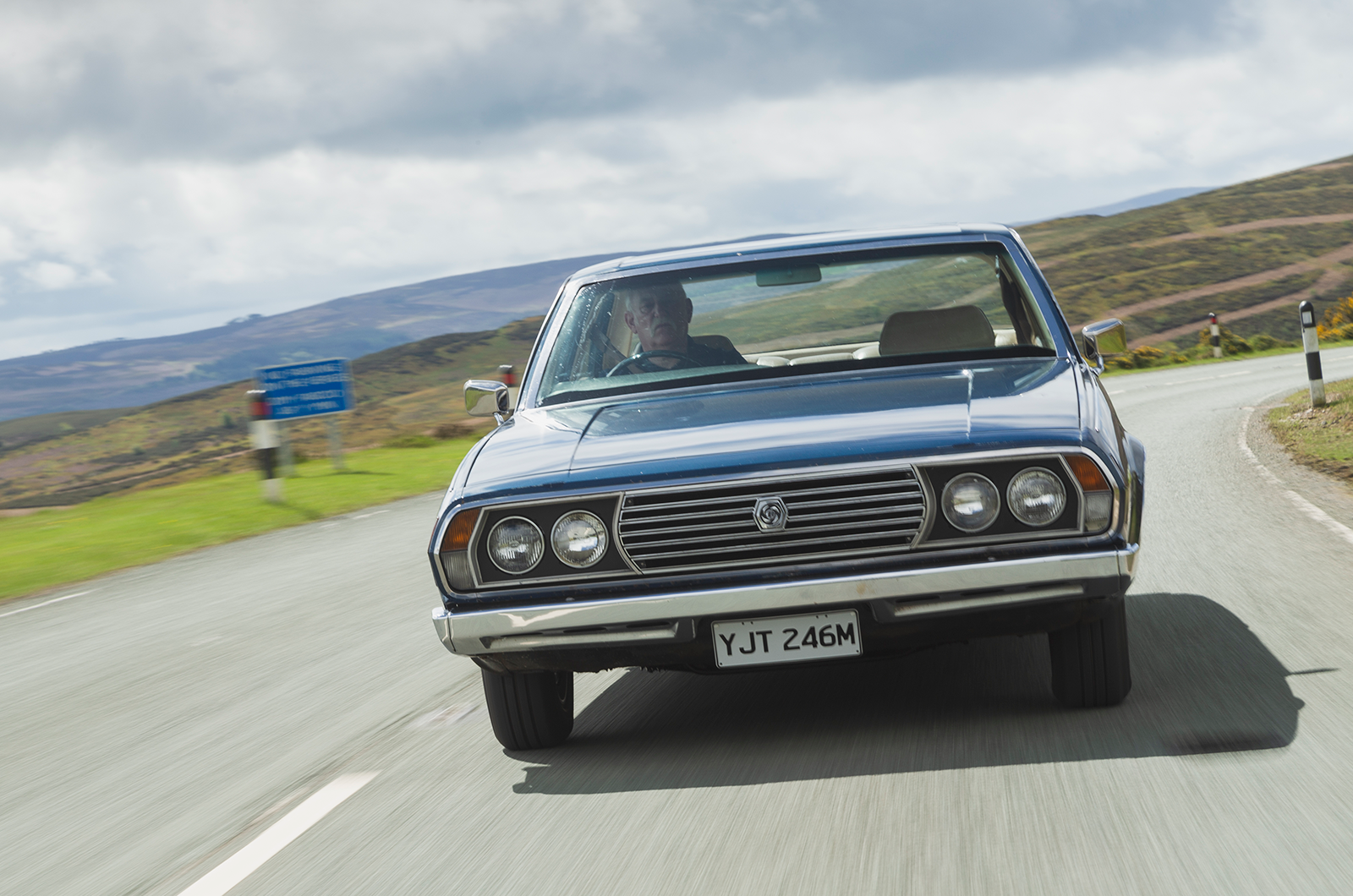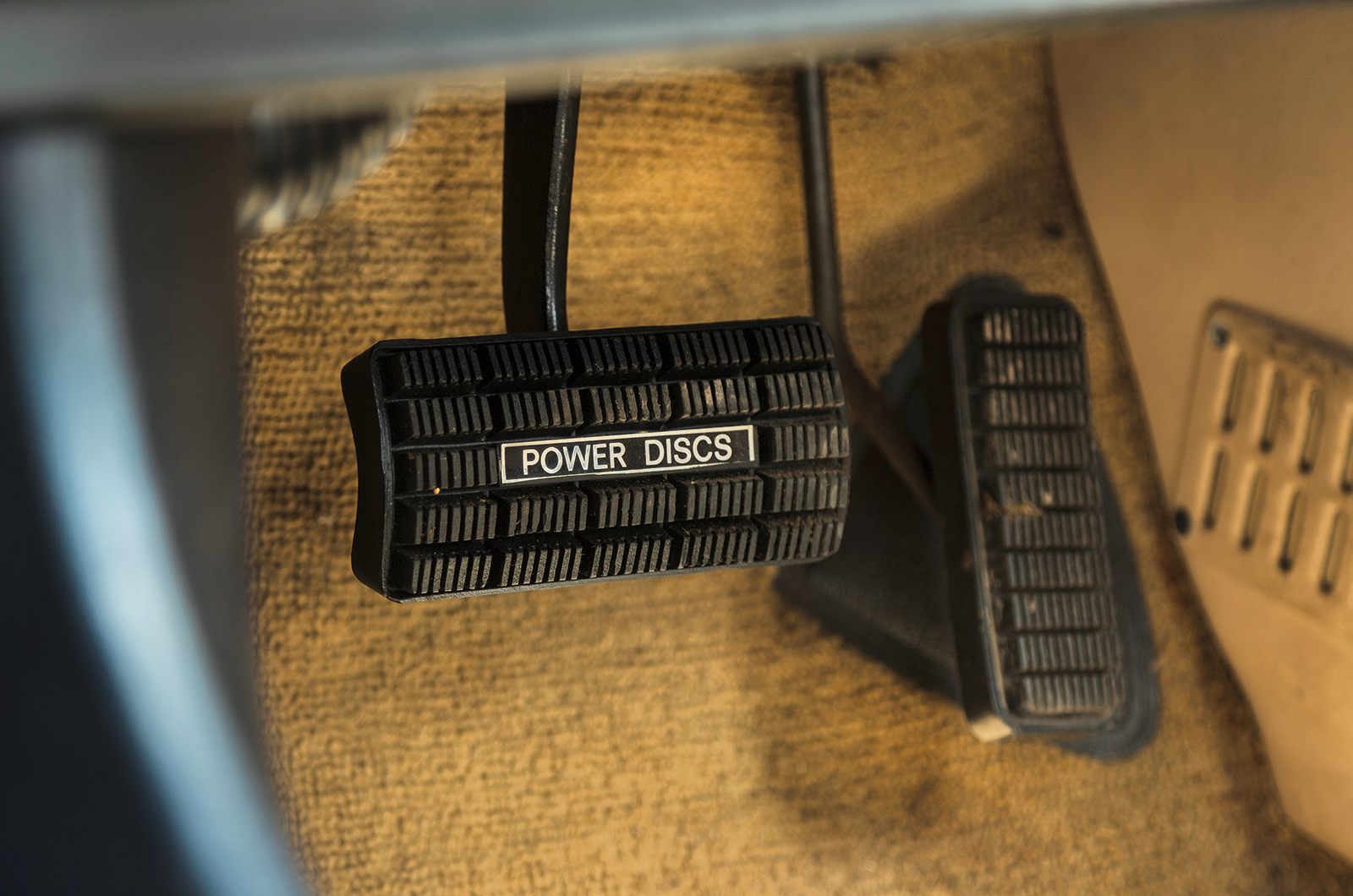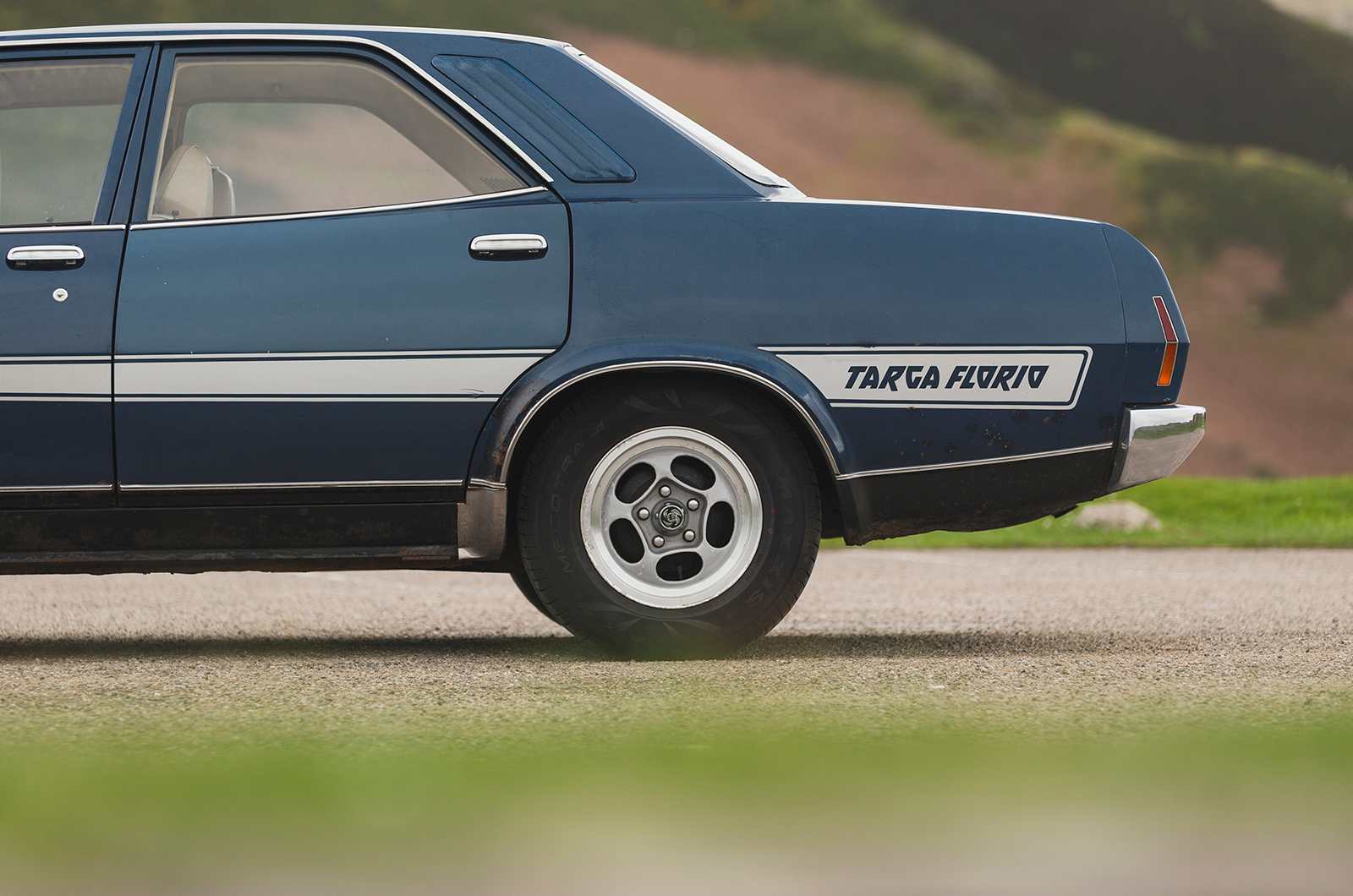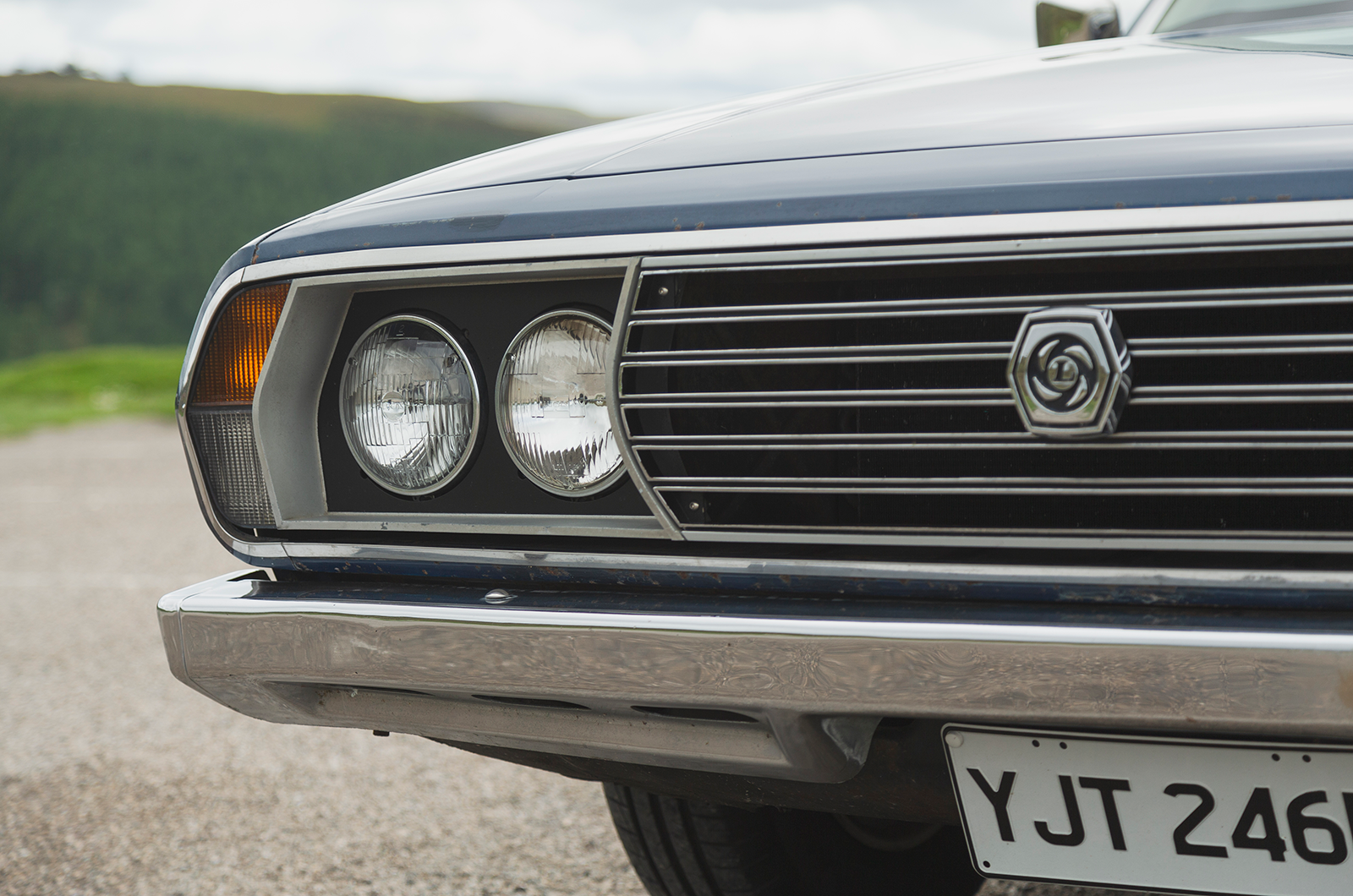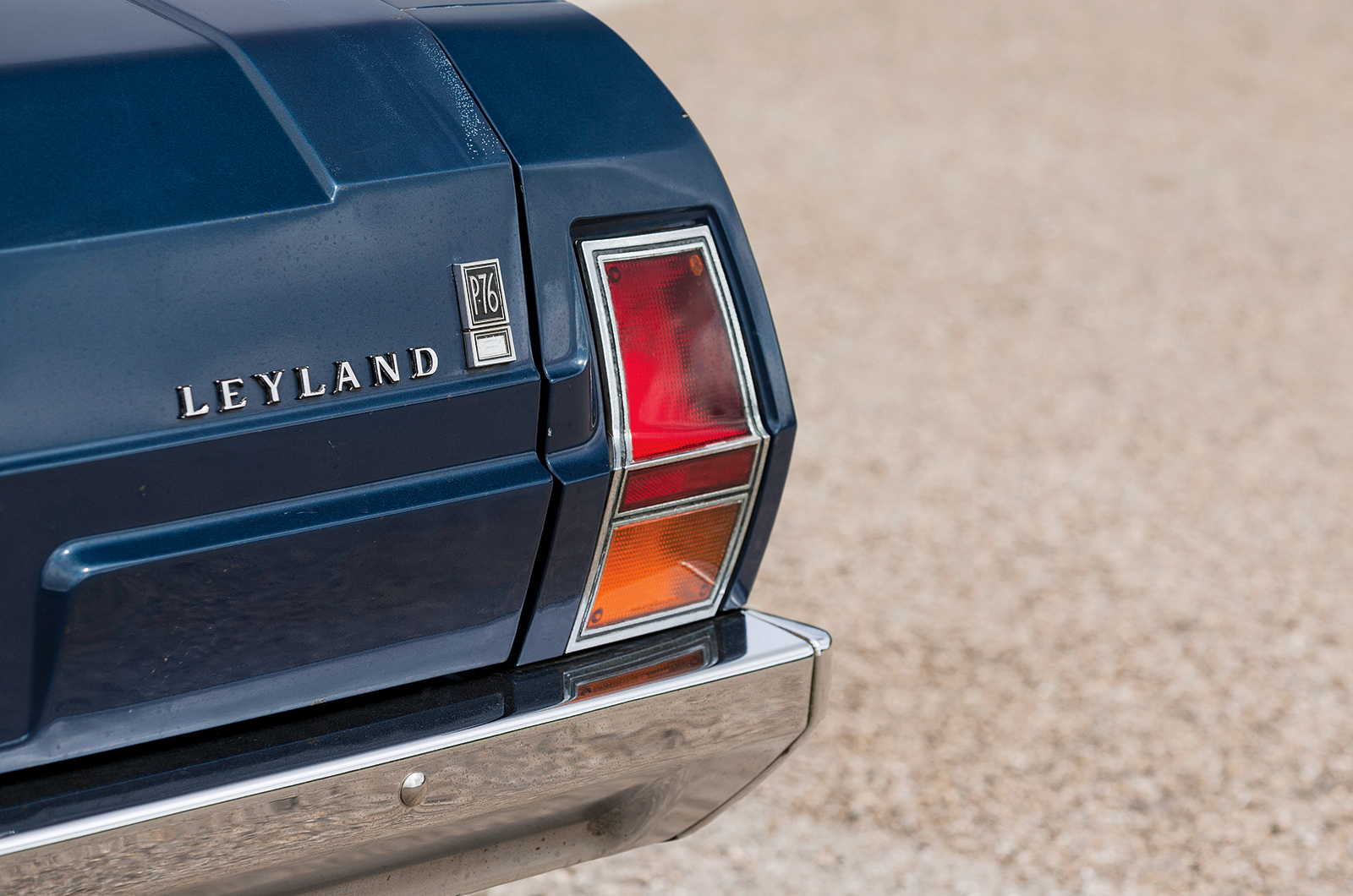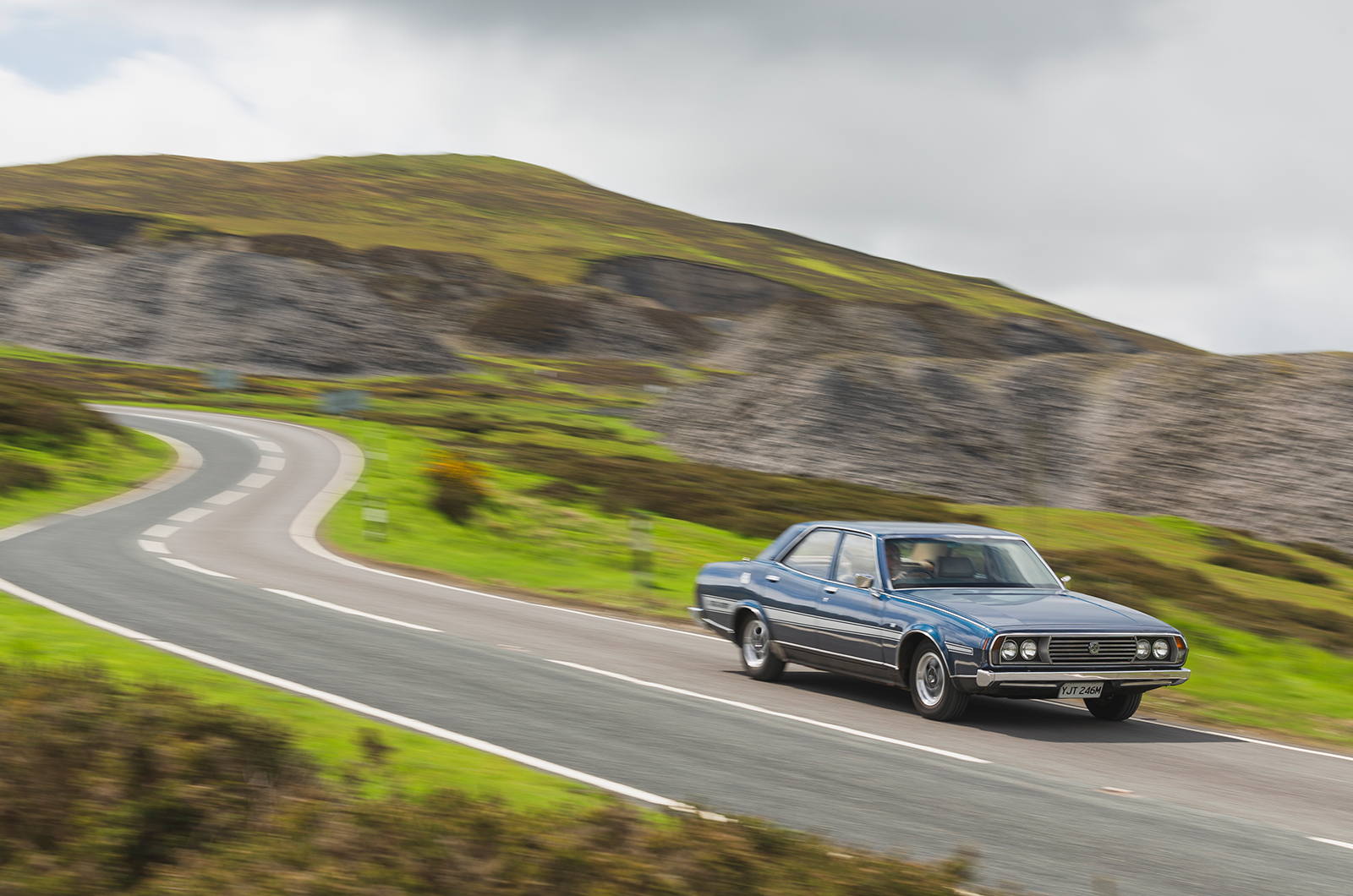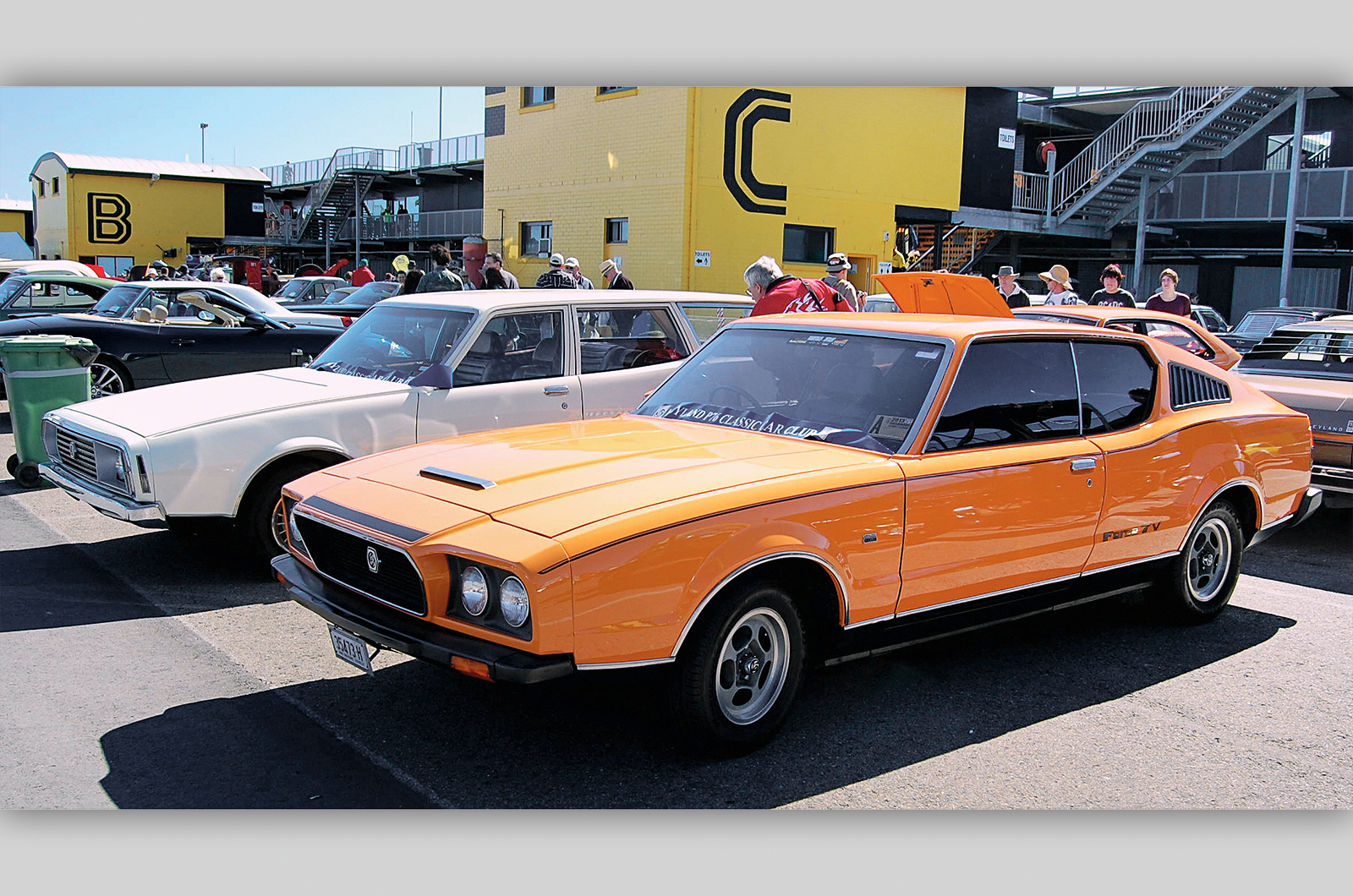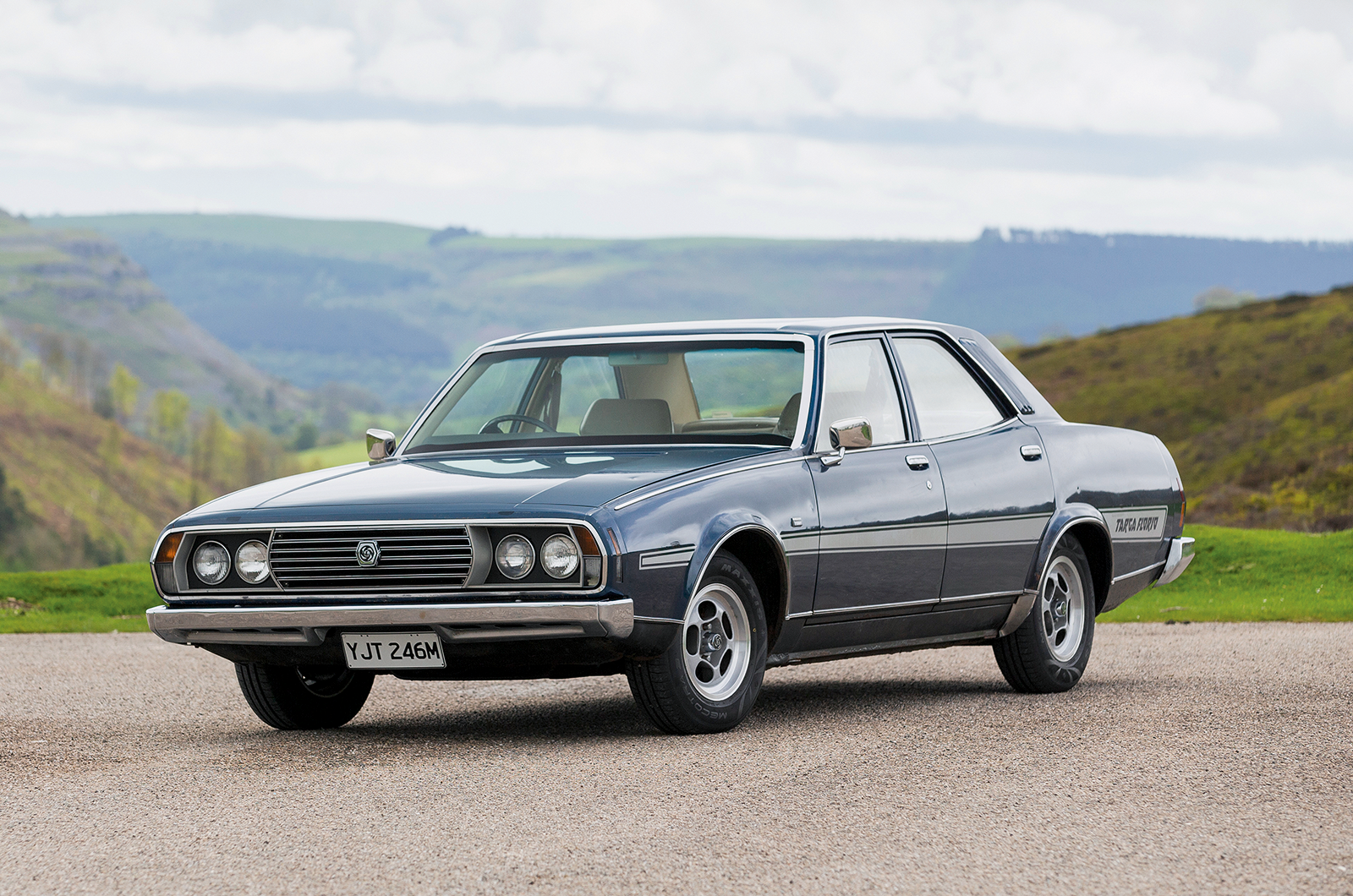Dave Eadon bought this 1974 P76 Targa Florio in 2001, but had previously owned a De Luxe V8 when he was training to be a commercial pilot in Australia in the mid-’80s.
His Targa Florio – one of 490 special editions celebrating a P76 win in the eponymous section of the 1974 World Cup Rally – was originally owned by a British merchant seaman who had it shipped home in 1977 on the royal yacht Britannia.
The TF was based on the mid-range Super trim (the others being De Luxe and Executive), but came as standard with a limited-slip diff, 14in alloy sports wheels, metallic paint (Omega Navy for this car), ‘Targa Florio’ graphics, power steering and a twin-speaker radio.
The Leyland P76’s boot can swallow a 44-gallon drum
Enter the cavernous cabin and you sit in a driver’s seat facing a slab of fake veneer deeply inset with two main dials – a speedo, with a yellow-red warning band starting at 65mph, and a clock – plus three smaller ones for fuel, water temperature and charge.
The Leyland script looks incongruous across the padded two-spoke steering wheel, but the integrated ‘Leyland Premier’ pushbutton radio is a sight to behold.
The cream-coloured seats are vast, with ribbed facings and no side bolstering.
Vision is excellent all round, with squared-off corners making the big car easy to place from the off.
The Leyland has presence, even at rest
Select Drive, slip your foot off the large, ‘POWER DISCS’-inscribed brake pedal and start gliding – because that’s what it feels like.
Even in this supposedly more sporting version, the P76 rolls down the road with the cosseting demeanour of a card-carrying land yacht, the Borg-Warner ’box blurring gearchanges almost imperceptibly.
The V8 engine emits a lovely woofle but is more subdued than any Rover V8 I’ve driven before, complemented by low levels of tyre and wind noise (the latter aided by that bonded front ’screen).
Although lauded at launch, the P76 was not the showroom hit that Leyland hoped it would be
But performance, while torque-rich, is ultimately quite tepid given the engine’s size (0-60mph in 8.9 secs was the official line, but this car feels slower).
Still, in the context of a car designed for schlepping along vast, arrow-straight highways, all those attributes make perfect sense.
On sinuous mid-Welsh A-roads, perhaps not so much.
While the P76’s steering is quite high-geared, it’s not imbued with the deft handling of, say, a Rover P6B or a Triumph 2500.
And while the sumptuousness of its ride may have been welcomed by the family on a sprint from Melbourne to Sydney, on these unforgiving UK roads it struggles to contain its composure, even if grip levels are admirable overall.
The Leyland P76 glides along open roads in a restrained manner
So was the P76 Leyland’s great white elephant? Not at all.
This was a brave and well-conceived dose of Anglo-Australian pragmatism that should have rocked the status quo, but failed abysmally due to circumstances largely unrelated to the car itself.
That its potential was left unrealised is one of the industry’s great tragedies.
Images: Luc Lacey
The muscle-car coupe that never was
A sportier two-door (closest) and load-lugging estate were on the cards before the P76 project was canned
A year after the P76 was launched, Leyland injected some brio into the range when it announced that a Michelotti-designed coupé would be offered, known as the Force 7.
Sharing no body panels with its saloon sibling, the two-door hatchback Force 7 was the perfect riposte to those who thought the P76 too conservative.
Only available with the P76’s V8, in either automatic or manual form, the Force 7 was offered with the options of a performance kit, lower gearing for quicker acceleration and a limited-slip differential, making it a perfect muscle-car rival to models from the more established domestic brands.
The Force 7’s development was initially pushed through at the expense of the P76’s estate variant, but, alas, when the saloon failed in the market, it took the coupe along with it.
Some 56 cars were built in total, but they were never sold before production ceased.
Eight were auctioned off as non-road-legal cars, one was retained by Leyland Australia and another shipped to the UK, where it was presented to BL boss Lord Stokes.
The remaining 48 were stripped of parts and unceremoniously crushed.
Factfile
Leyland P76 Targa Florio
- Sold/number built 1973-’74/18,007 (all P76s)
- Construction steel monocoque
- Engine all-alloy, ohv 4416cc V8, single twin-choke Stromberg carburettor
- Max power 192bhp @ 4250rpm
- Max torque 285lb ft @ 2500rpm
- Transmission three-speed automatic, RWD
- Suspension: front independent, by MacPherson struts, anti-roll bar rear live axle, radius arms, coil springs, telescopic dampers
- Steering power-assisted rack and pinion
- Brakes discs front, drums rear, with servo
- Length 16ft (4876mm)
- Width 6ft 3¼in (1910mm)
- Height 4ft 7in (1394mm)
- Wheelbase 9ft 3¼in (2824mm)
- Weight 2910lb (1320kg)
- Mpg 15.8
- 0-60mph 8.9 secs
- Top speed 107mph
- Price new AU$3865
- Price now £10,000*
*Prices correct at date of original publication
Enjoy more of the world’s best classic car content every month when you subscribe to C&SC – get our latest deals here
READ MORE
Chrysler Valiant Charger: an Australian odyssey
Rover ambitious: celebrating the SD1
20 muscle cars not from America
Simon Hucknall
Simon Hucknall is a senior contributor to Classic & Sports Car
